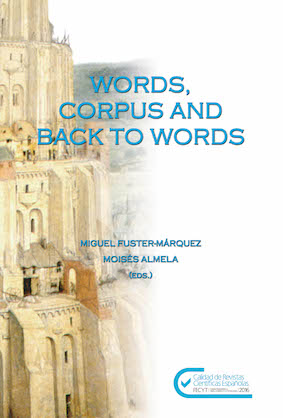A quantitative survey of N Prep N constructions in Romance languages and prepositional variability
DOI:
https://doi.org/10.7203/qf.22.11305Keywords:
Compounds, quantitative corpus linguistics, lexicon-syntax interface, Romance Abstract
Abstract
The distinction between syntagmatic compounds of the type N Prep N, such as Fr. jouet d’enfant, and nominal syntagms of the type N Prep N, such as the partially equivalent Fr. jouet pour enfants, remains unclear and vague. This is mainly because the lexical and syntactic status of syntagmatic compounds still is controversial. In some cases, as in jouet d’enfant and jouet pour enfants, partial equivalent syntagmatic compounds and nominal syntagms may coexist and underlie a specific variation and alternation. In other cases, such as Pt. bracelete de aço and bracelete em aço, two variants of a syntagmatic compound may alternate and coexist. The first part of this paper provides an overview of the current discussion on these two types of constructions. The second part addresses the alternation and variation of syntagmatic compounds and nominal syntagms by means of analysis of large-scale corpus data, the French, Spanish and Portuguese corpus of the TenTen family. Here, the focus lies on the variation of the prepositional internal element of these constructions as well as on a comparison of different word formation patterns.
 Downloads
Downloads
Downloads
Published
How to Cite
-
Abstract987
-
PDF354
-
PDF (Español)150
-
PDF (Català)162
Issue
Section
License
 Este obra está bajo una licencia de Creative Commons Reconocimiento-NoComercial-SinObraDerivada 4.0 Internacional.
Este obra está bajo una licencia de Creative Commons Reconocimiento-NoComercial-SinObraDerivada 4.0 Internacional.
Authors who publish with this journal agree to the following terms:
- Authors retain copyright and grant the journal right of first publication with the work simultaneously licensed under a Creative Commons Attribution License that allows others to share the work with an acknowledgement of the work's authorship and initial publication in this journal.
- Authors are able to enter into separate, additional contractual arrangements for the non-exclusive distribution of the journal's published version of the work (e.g., post it to an institutional repository or publish it in a book), with an acknowledgement of its initial publication in this journal.
- Authors are permitted and encouraged to post their work online (e.g., in institutional repositories or on their website) prior to and during the submission process, as it can lead to productive exchanges, as well as earlier and greater citation of published work (See The Effect of Open Access).



